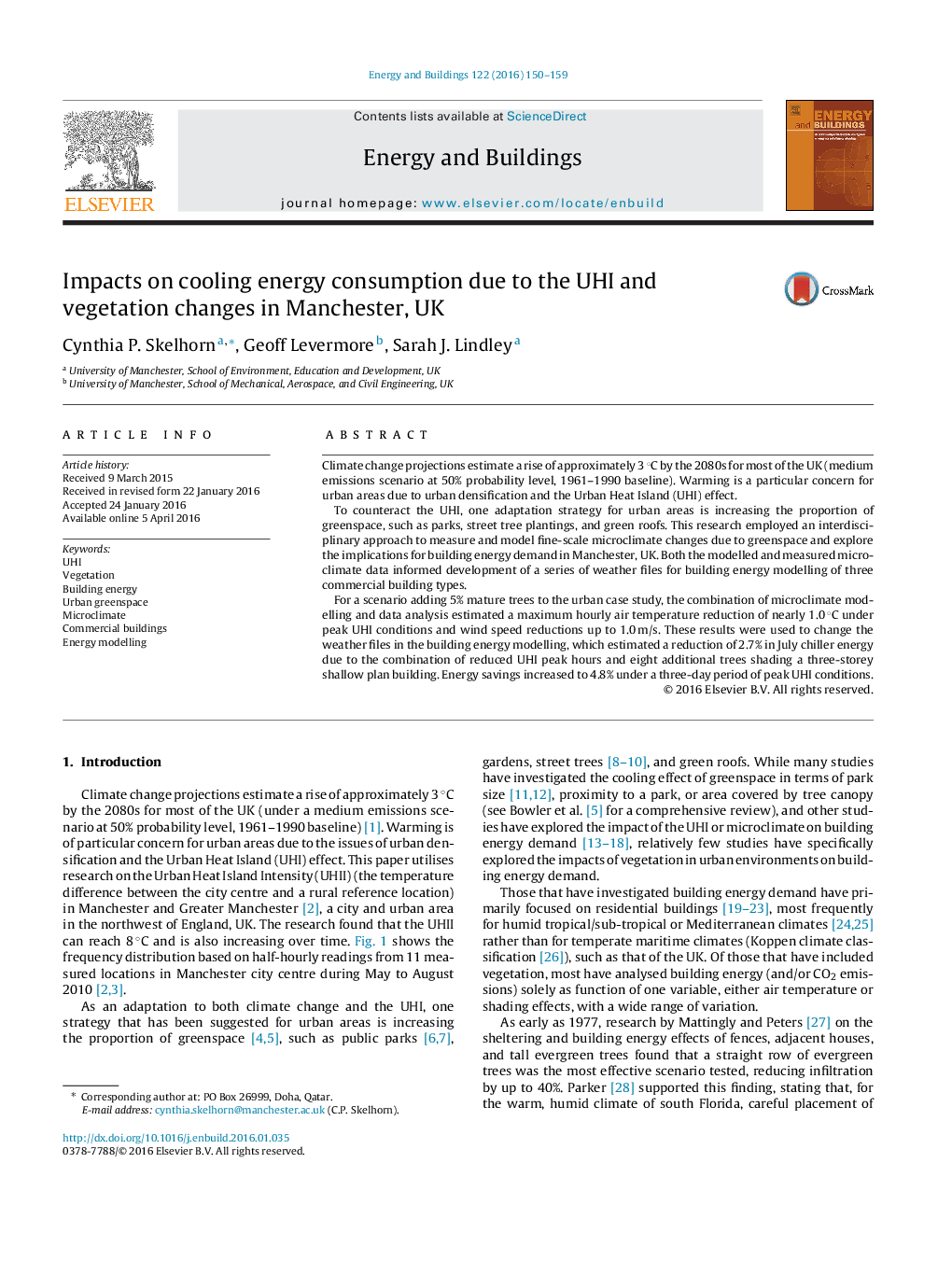| کد مقاله | کد نشریه | سال انتشار | مقاله انگلیسی | نسخه تمام متن |
|---|---|---|---|---|
| 262073 | 504009 | 2016 | 10 صفحه PDF | دانلود رایگان |

• This research estimated building energy changes due to UHII and urban vegetation.
• The summer UHI alone increased the air conditioning load between 9% and 12%.
• Adding 5% mature trees in the urban case reduced peak UHII by 1.0 °C.
• Energy modelling estimated a reduction of 2.7% in July chiller energy due to trees.
• Energy savings increased to 4.8% under a three-day period of peak UHI conditions.
Climate change projections estimate a rise of approximately 3 °C by the 2080s for most of the UK (medium emissions scenario at 50% probability level, 1961–1990 baseline). Warming is a particular concern for urban areas due to urban densification and the Urban Heat Island (UHI) effect.To counteract the UHI, one adaptation strategy for urban areas is increasing the proportion of greenspace, such as parks, street tree plantings, and green roofs. This research employed an interdisciplinary approach to measure and model fine-scale microclimate changes due to greenspace and explore the implications for building energy demand in Manchester, UK. Both the modelled and measured microclimate data informed development of a series of weather files for building energy modelling of three commercial building types.For a scenario adding 5% mature trees to the urban case study, the combination of microclimate modelling and data analysis estimated a maximum hourly air temperature reduction of nearly 1.0 °C under peak UHI conditions and wind speed reductions up to 1.0 m/s. These results were used to change the weather files in the building energy modelling, which estimated a reduction of 2.7% in July chiller energy due to the combination of reduced UHI peak hours and eight additional trees shading a three-storey shallow plan building. Energy savings increased to 4.8% under a three-day period of peak UHI conditions.
Journal: Energy and Buildings - Volume 122, 15 June 2016, Pages 150–159